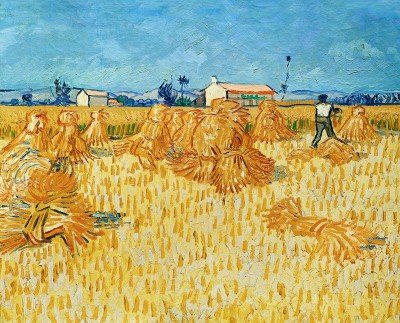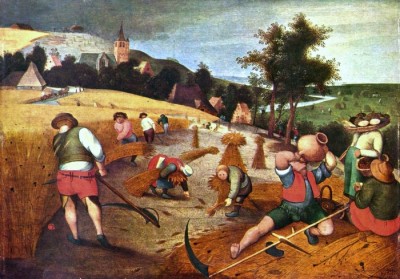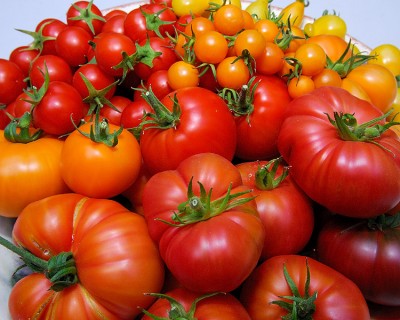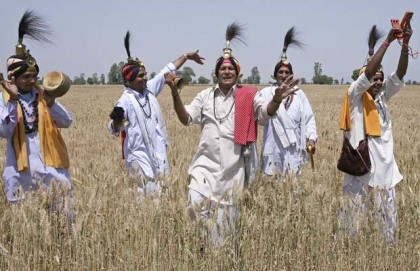 Weeds. They have my attention. Grass rooting into in my flowerbeds. Clover. Acorn sprouts. The indefatigable dandelion. The skulking, nameless stalks that mimic zinnias and daisies till they suddenly loom large. My vigilant eye scans for them continually. My experienced hand is ready to pull with just the right twist to bring up the root, too. I bend my back to the task, muscles from hand to arm to shoulder to waist all responding in the War of the Weeds. The flowers I want get less of my attention, but they do get my awe. It is for them that I am waging this war, I tell myself, for the way they thrill my eye and raise my spirit, for pride of home and my own pride, that I engage in this uprooting of dastardly weeds. But there is no denying that gardening is an exercise in control.
Weeds. They have my attention. Grass rooting into in my flowerbeds. Clover. Acorn sprouts. The indefatigable dandelion. The skulking, nameless stalks that mimic zinnias and daisies till they suddenly loom large. My vigilant eye scans for them continually. My experienced hand is ready to pull with just the right twist to bring up the root, too. I bend my back to the task, muscles from hand to arm to shoulder to waist all responding in the War of the Weeds. The flowers I want get less of my attention, but they do get my awe. It is for them that I am waging this war, I tell myself, for the way they thrill my eye and raise my spirit, for pride of home and my own pride, that I engage in this uprooting of dastardly weeds. But there is no denying that gardening is an exercise in control.
Jesus, who gives us the image of God as the Mad Farmer, scattering good seed everywhere, says, perhaps in response to questions (But what about the weeding?) that the Mad Farmer just lets the weeds grow among the wheat, saying to his workers (that would be you and me) Leave the weeds, lest you inadvertently pull out good wheat.  Wait till the harvest, says the sower, then you can sort out the weeds.
Wait till the harvest, says the sower, then you can sort out the weeds.
Sane Farmers know weeds will crowd out wheat, not to mention all annuals and many perennials. Plants compete for soil nutrition, for sun and water. Without weeding there will be bumper crop of weeds, and not a lot else.
No wonder Sane Farmers see weeds as the Devil’s business! And yet: a weed is a plant for which we do not yet have a use, or in which we cannot see any beauty, a plant for which we did not till this patch of ground. And our choices, as well as our seeing, can change. For nearly two centuries American settlers thought tomatoes were poisonous. Now they are cherished, grown in pots, flown in from Latin America, hothouse grown in winter. Tomatoes are good eating. But it took a long time for us to figure that out.
 There is an old legend that a plot to kill George Washington during the Revolution involved putting tomatoes into his food. The plotter left a confession before committing suicide. What’s verifiable is that the tomato was considered poisonous from the 1500s until Revolutionary times.
There is an old legend that a plot to kill George Washington during the Revolution involved putting tomatoes into his food. The plotter left a confession before committing suicide. What’s verifiable is that the tomato was considered poisonous from the 1500s until Revolutionary times.
The Mad Farmer God understands that our perspectives can change, that changing times can change our needs, that the human eye may not see clearly, and that time will tell us more than prophecy can know. We are learning about the dangers of high-yield, nutrient-less corn, the vulnerability of single variety mega-crops to diseases, the terrible effects of weed-killers, all of which we have preferred as wise farming for years.
My acceptance of this truth ends at my own garden. Those weeds are coming out! And yet the earth has filled itself with profuse variety by following the Mad Farmer’s advice, as Darwin himself has shown us. The Mad Farmer’s weed filled work sustains life, and not the flower beds of household gardeners, nor the use of huge acreage for single crop production.
 In the garden of ideas I take the Mad Farmer’s advice more seriously, but not more easily. There are pernicious weeds in the common garden of public thought. I’ve read with dismay the rejoicing of the religious right over the Supreme Court’s Hobby Lobby decision, their assumption that the Court has handed them control over American culture for decades to come. I’m stunned that the nine justices split on the issue of birth control, and that all the women on the court were overruled.
In the garden of ideas I take the Mad Farmer’s advice more seriously, but not more easily. There are pernicious weeds in the common garden of public thought. I’ve read with dismay the rejoicing of the religious right over the Supreme Court’s Hobby Lobby decision, their assumption that the Court has handed them control over American culture for decades to come. I’m stunned that the nine justices split on the issue of birth control, and that all the women on the court were overruled.
The Mad Farmer does not urge passivity. The tending of gardens has been human work since Eden, and the societal garden is part of that. Waiting is always an act of discernment. And discernment is a delicate form of weeding. Wait till harvest, urges the Mad Farmer, meaning, wait till the right time. American conversation on birth control, abortion, and universal health care is not over yet. And this is a conversation about a harvest in which we want different outcomes. In it, religion gets used as the easel on which a lot of ideas are propped:
Some want white people to reproduce at a greater rate in order to retain their population dominance.
Some want women to accept biology as destiny, marriage as morality, and fertility as salvation.
Some think the issue is who owns the money: if employers own their company, then they get to call the shots, imposing their own values as part of their wealth they pay to their employees. This view separates the employers’ wealth from the workers’ work.
Some, and I am one, want women to be free to name their own demons and have health coverage to ask their doctors to help them, whether it is infertility or unwanted fertility. Here in America women, too, get to pursue happiness as their right. May it be so one day every where.
where.
The starkest Weeding of the Garden is in the headlines once again: Israel and Palestine. What will this land grow? Can these minds ever change? Can the vision in these people ever shift? Is it possible for us to learn to love our enemies, to do good to those who spitefully use us, to turn the other cheek?
At the harvest, according to Matthew, the righteous will shine like the sun in the kingdom of their Father. And the Mad Farmer, who loves all that grows, wild and abandoned, wanted and unwanted, in the garden, will name all that is growing as Good, for that word has applied to All, since the Creation. In that shining, at last it will be the right time, and we will all come home.
____________________________________________________________
Illustrations:
1. Harvest in Provence, Vincent Van Gogh, 1888. Israel Museum, Jerusalem. Vanderbilt Divinity School Library, Art in the Christian Tradition.
2. Harvest. Abel Grimmer, 1607. Koninklijk Museum voor Schone Kunsten Antwerp, Belgium. Vanderbilt Divinity School Library, Art in the Christian Tradition.
3. Tomato Harvest. Google Images.
4. Supreme Court Justice. Google Images.
5. Sikh Vaisakhi Harvest Festival. Image from The Province blog.











